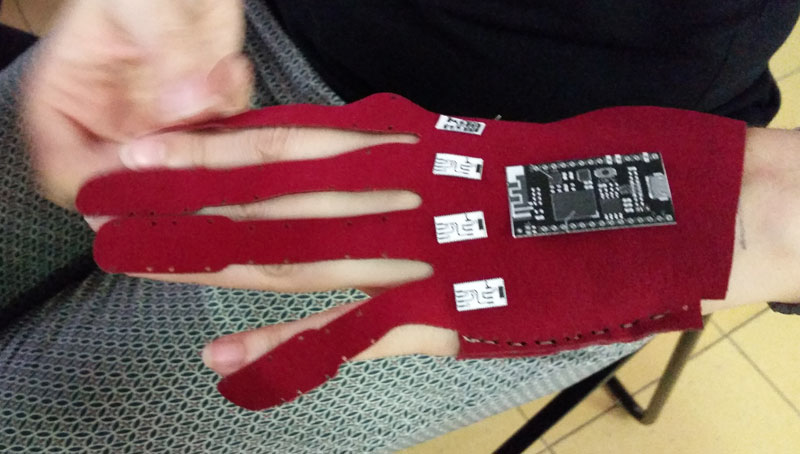ReHub glove experimenting and developing processes are going hand in hand on two fronts:
- Textile
- Technology
ReHub Team is at work during OpenCare - MIR to analyze and redesign the glove, improving the weak aspects of the old prototype:
Textile
We are defining a new pattern for the glove: a surface of stretch material that covers the top of the hand and holds to it by soft elastic bands on the bottom. Tailoring a glove is not easy stuff, this new model is designed to be easily reproduced with digital fabrication and basic sewing knowledge. Most important: this kind of glove can be easily worn also by those who have difficulty wearing normal gloves (stretching fingers and so on).
To make it functional and completely customizable we are working on a digital/parametric version: we studied hands dimensions to deliver a measurements chart that could be filled to modify the glove (we are looking for hands, by the way). The output will be a .dxf file that can be laser-cutted at any makerspace.
Here the very first experiment:


Technology
Technologic development during OpenCare MIR was about searching for a micro controller worthy of the new glove, version 4.0, described above.
We selected curieNano micro controller of DFRobot, the evolution of Arduino Curie’s board developed on Intel’s SoC.
A technological aspect we discovered is that the number of ADC inputs of the selected microcontroller is lower than the number of analog sensors on the glove.
To solve this problem we are developing an I2C interface board from which a microcontroller can acquire two analog sensors and transfer captured data with the I2C to the main microcontroller. Using I2C technology we can add many sensors that communicate with the Intel Curie Through a defined hexadecimal address. This technique allows to have many sensors connected to the glove and only 4 wires between each I2C and the glove brain (curieNano).
Here a sample of the system we will use to connect the tiny microcontrollers.

Soon for further developments!
Mauro & Sara